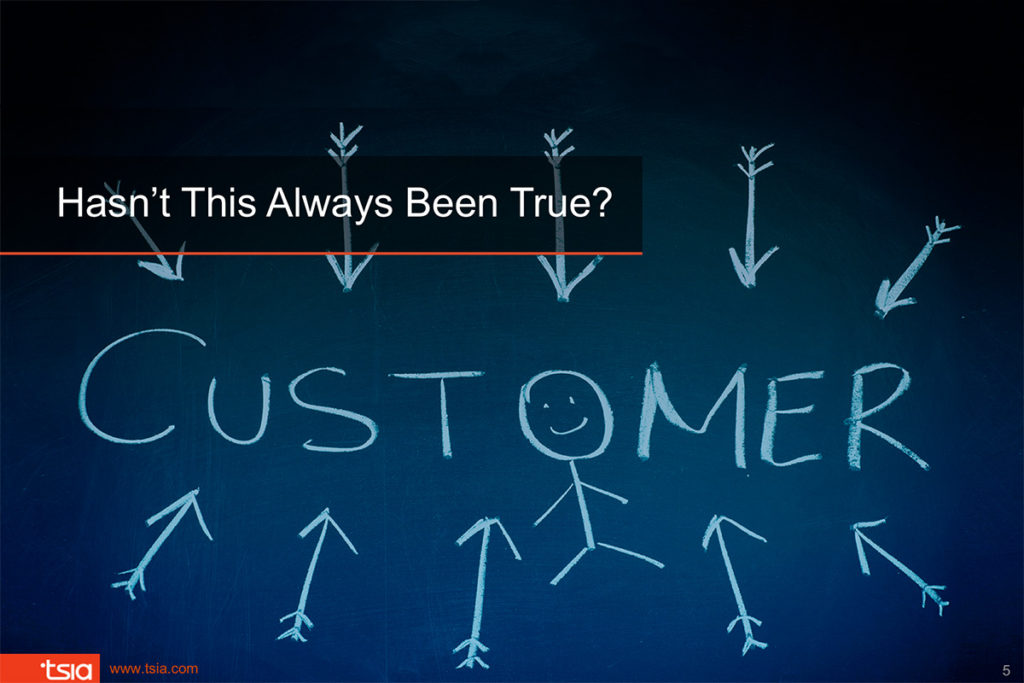Customer Success Summit is the industry-leading conference on customer success because it brings together experienced customer success professionals and industry thought-leaders, as well as research institutes for industry benchmarking. To that end, one of the keynotes from #CSSummit17 was Thomas E. Lah, Executive Director at TSIA, a for-profit research institute that does deep operational benchmarking with member companies. Thomas used that data vault to inform the frameworks he shared in his presentation about Building Customer Centric Organizations, and we’ve summarized those frameworks below.
Thomas answered four primary questions in his presentation:
- Why do organizations need to be customer-centric now?
- What will customer-centric organizations do?
- How will we fund these organizations?
- What will these organizations look like?
Why do organizations need to be customer-centric now?
In the past when selling technology, organizations would sign on the dotted line and pay upfront. Even if they didn’t have great adoption or ROI, the high cost of switching was usually a sufficient deterrent to changing vendors.
Now in the subscription economy, organizations write a small check (or none at all in a freemium model) for only what they are using. The new waterfall needs to minimize loss on the front and maximize loss on the back – which is fairly complicated.
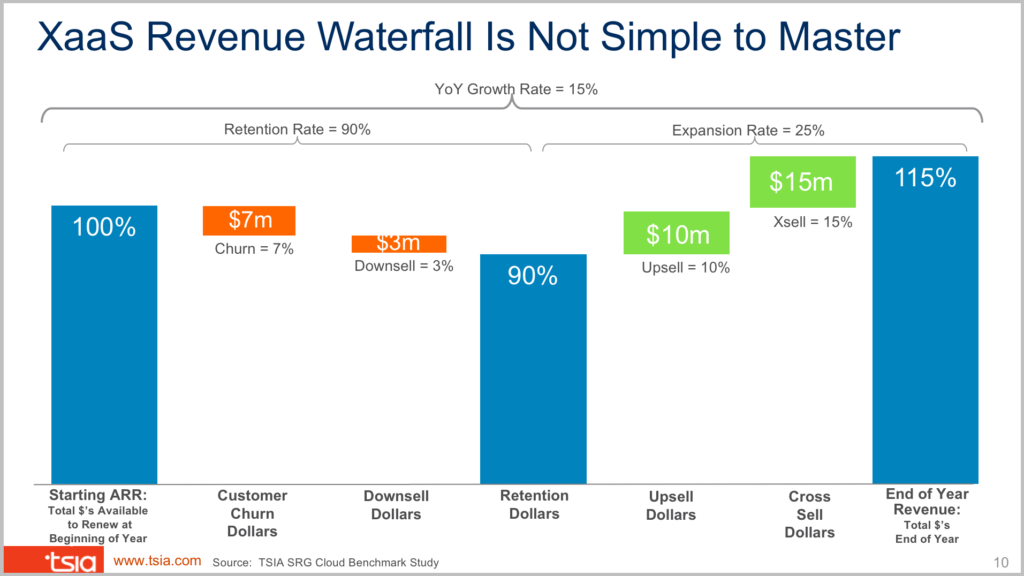
What will customer-centric organizations do?
One general TSIA philosophy is that growing ARR is a data-driven process, not a heroic act. Organizations can use data to grow from low adoption, to high adoption, and finally to effective adoption. Currently, only 25% of benchmarked companies are using data analytics to predict churn, and only 13% to predict expansion opportunities.
To structure data-driven processes, TSIA advocates two frameworks, LAER (internal) and PIMO (external, customer-facing).
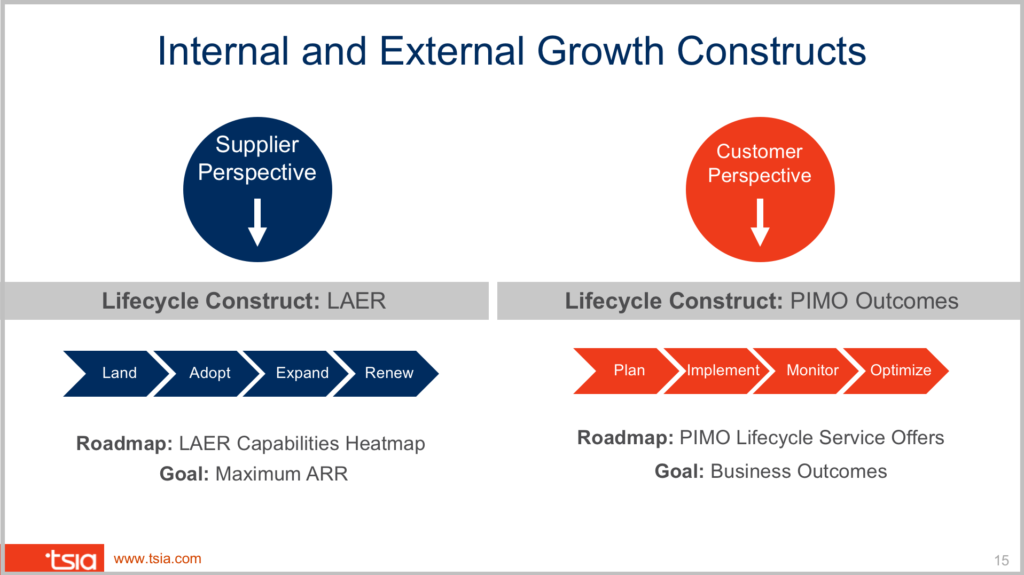
It’s important to pivot the value proposition of your company with customers, from “we’re here to keep things up and running” to “we’re in a relationship because I’m going to help you adopt and achieve business outcomes.”
How will we fund these organizations?
Initially, customer success was funded by support from Cost of Goods Sold (COGS) or Sales & Marketing (S&M). However, this model is problematic because it’s proven to not be profitable, no matter how much it is scaled.
It’s finally time to monetize customer success, instead of unprofitably bundling it in other areas. 49% of benchmarked companies are monetizing, and as it becomes common practice, it’s clear that you can bring each customer success revenue stream into the business model with its own specific profile and margin.
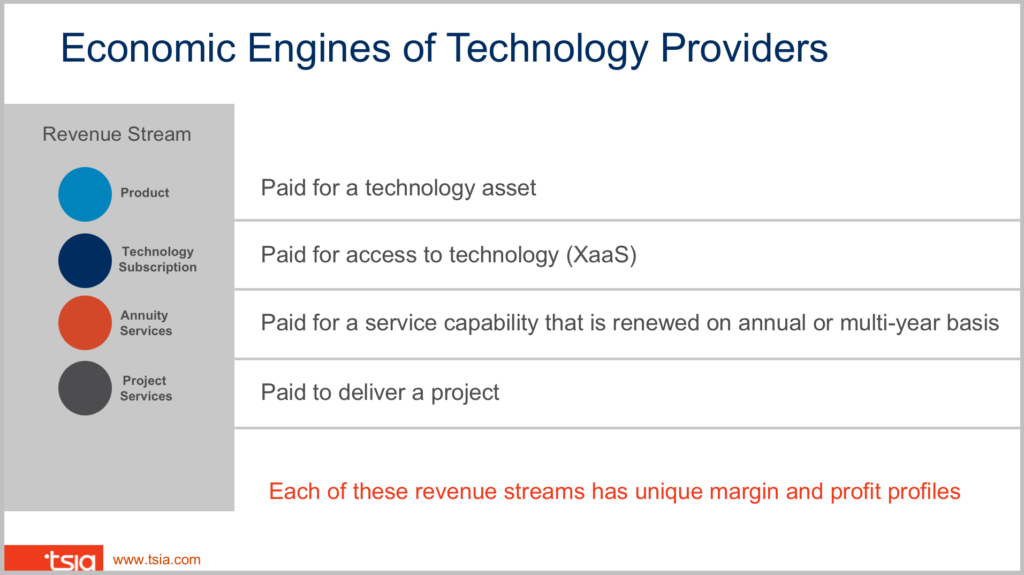
What will these organizations look like?
In an annual benchmark survey that is open to the public, the results from two years ago showed that >50% of respondents said they have customer success organizations, which means we can now consider these common practice.
Currently, however, there are emerging challenges with these organizations that are putting stress on the structure of tech companies, including:
- Ineffective sales investments
- Portfolio proliferation causing customer confusion as offerings from product and services lines are beginning to overlap
- Cost of sales with current models not optimized to cost effectively land XaaS customers
- The adoption gap as the org structure does not effectively drive adoption and expansion of XaaS offers
So the big question: how do we accelerate profitable growth in today’s technology marketplace? The answer is surprisingly prescriptive:
- Embrace “as a service” offers
- Those offers and value propositions must be built around helping customers achieve specific business outcomes, going beyond feature/functionality
- Need a go-to-market model that cost effectively drives customer adoption, account expansion, and contract renewal
And the changes necessary to align to this prescription are:
- Blurring of service and sales roles
- Breaking down traditional P&L structures
- Instituting new focus on adoption and cost effective expansion
- Leveraging technology, not labor, to educate the customer, unfold offers, and monitor adoption
In the LAER model, the customer is owned by the process of customer engagement, instead of a specific team. And for each department that is involved in customer engagement, there will be changes to mindset and actions:
- Marketing must live and die by MQLs
- Sales must become more vertical so they can speak the individual business outcome languages
- Customer Growth, which includes customer success, support services, education services, and more, must collapse all of those P&Ls into a common organization and get more flexibility
- Success Science must be a focus with dedicated analytics capability for data-driven process
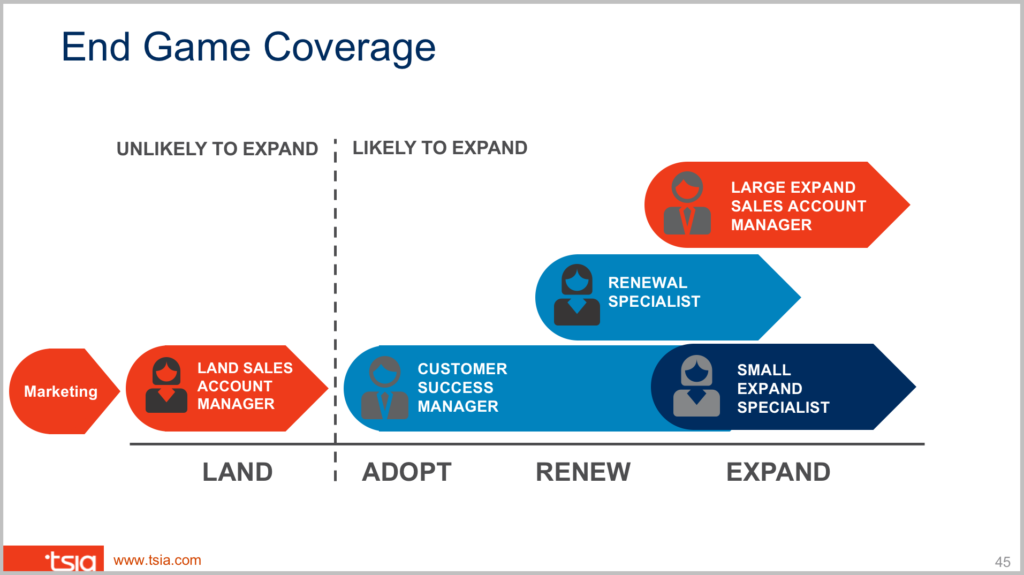
Finally, this is Thomas’s best depiction, in detail, of what the organization that is customer-centric will look like:
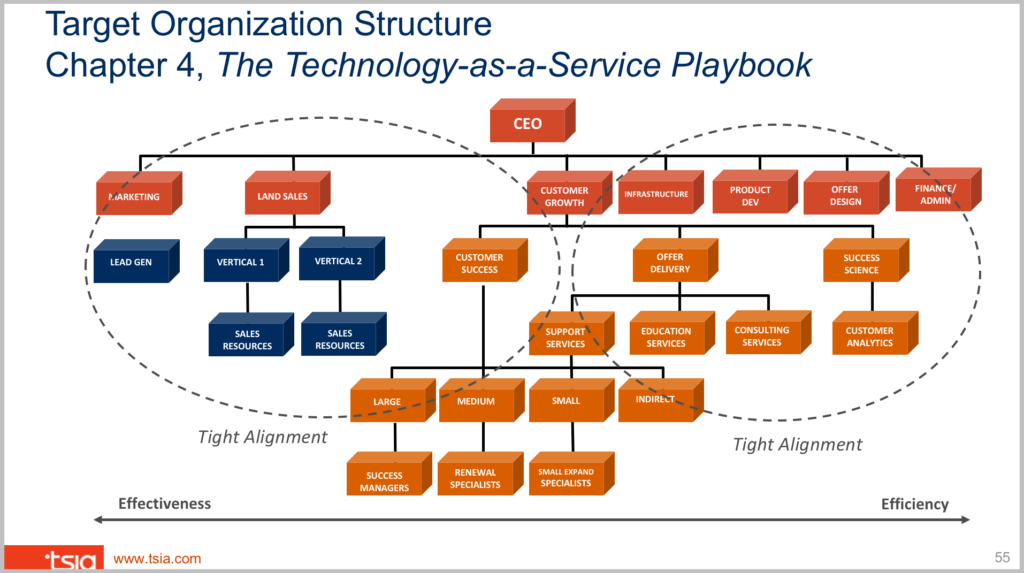
For all of Thomas’s detailed, informative slides, go here. To view his complete presentation, watch the video below!
